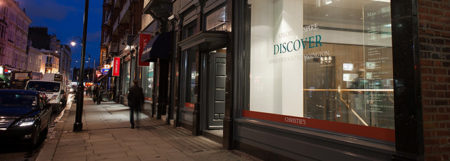The London trade continues to be abuzz with discussions about the vacuum left in the auction market with the closure last week of Christie’s South Kensington. The last sale at the venerable venue was on July 19, consisting of an ‘Interiors’ sale, a grab-bag of period and not-so-period material in the fine and decorative arts, price point driven to appeal to younger and design-driven buyers. This is a format CSK pretty much invented, but has now been adopted by very nearly every other sale room- except, it is significant to note, Sotheby’s, who tried the concept at their Olympia saleroom, abandoning the concept, and the saleroom, nearly 10 years ago.
Jussi Pylkkanen of Christie’s claims that CSK was still profitable, but that the company made a strategic decision to deploy its resources in more profitable areas, like expanding its presence in China and online. I imagine those resources are a bit more plentiful now it’s shed a rumoured 14% of its workforce, including everyone at CSK. Still, a few senior CSK staffers have landed on their feet it seems, finding work in some of the other local houses, including Chiswick Auctions in west London, and Rosebery’s in southeast London, and Sworder’s to the north.
While one would imagine there will be some expertise carried along, whether there is anything in the way of a book of business is an open question. Certainly, the local houses that offered employment expect something in the way of an increase in sales over and above what might naturally come their way the result of the closure of CSK. The Antiques Trade Gazette reports that CSK’s annual volume of consigned items ran to 8,500 lots, but one doubts this will be distributed wholly to the likes of the smaller local houses. Bonhams retains its two London rooms- New Bond Street and its second rank room in Knightsbridge, which room will certainly benefit. Christie’s of course retains its King Street location, and will doubtless high grade consignments that might have formerly gone to South Kensington, and Sotheby’s will probably benefit in the same way.
What has seemed with the loss of CSK will prove, in my opinion, not a vacuum but an overfilling of the marketplace that will certainly result in not too long a time in a winnowing out of the sale rooms now optimistically but nevertheless hell-bent on expansion. Who will survive? An open question, but we’ll certainly see another wave of redundancies sometime soon. And we’ll see a general testing of the liquidity contained in the balance sheets of all the sale rooms in London and the Home Counties, as company cash is strained while awaiting an illusory increase in revenues.


